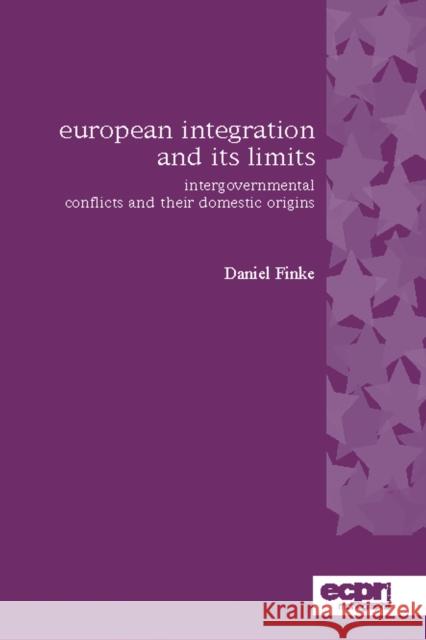European Integration and its Limits: Intergovernmental Conflicts and their Domestic Origins » książka
European Integration and its Limits: Intergovernmental Conflicts and their Domestic Origins
ISBN-13: 9780955820373 / Angielski / Miękka / 2010 / 252 str.
Since its legal foundation in 1993, the European Union has been challenged by three concurring developments. Its decision-making bodies groaned under burgeoning legislative activity, and Eastern enlargement was expected to limit law-making efficiency. At the same time, European citizens grew wary of EU politics and increasing integration. This book explains how European governments handled these challenges and, step-by-step, agreed on significant reforms which led to the signing of the Lisbon Treaty in December 2007. Drawing on unique survey data, European Integration and Its Limits provides a solid empirical analysis of the three most important intergovernmental conferences. It shows how far voters and political parties have been able to influence European treaty reforms, and it scrutinises the mechanisms underlying intergovernmental treaty negotiations in an ever-growing Union. The book discusses the domestic position formation process as well as the dynamics of intergovernmental bargaining. Ultimately, it explains European integration from Maastricht to Lisbon.
Ever since its legal foundation in 1993 the European Union has been challenged by three concurring developments. Its decision making bodies were groaning under an increasing amount of legislative activity and pending Eastern enlargement was expected to further decrease law making efficiency. At the same time, European citizens grew increasingly wary towards EU politics and further integration. This book explains how European governments handled these challenges and, step-by-step, agreed on significant treaty reforms which eventually led to the signing of the Lisbon Treaty in December 2007.Drawing on unique survey data the book provides a solid empirical analysis of the three most important Intergovernmental Conferences. It shows in how far voters and political parties have been able to influence European treaty reforms and it scrutinises the mechanisms underlying intergovernmental treaty negotiations in an ever growing Union. The book discusses the domestic position formation process as well as the dynamics of intergovernmental bargaining. Ultimately, it explains European integration from Maastricht to Lisbon."European Integration and Its Limits is an exemplary work of scholarship. It combines sound theory building and rigorous empirical testing. It is one of the most sophisticated efforts to uncover the fundamental dynamics of European integration. It demonstrates convincingly not only the domestic origins of governmental treaty reform positions, but also the interdependence between governmental preferences and EU institutional reforms. This book makes a major contribution more broadly to the study of international institutions both as equilibrium and as rules of the game." - Xinyuan Dai, University of Illinois, Urbana-Champaign"What Andrew Moravcsiks book on the treaties from Messina to Maastricht did with historical detail, Daniel Finke does with analytical rigor for the treaties from Maastricht to Lisbon. He provides an impressively solid and innovative account of how the member states of the European Union addressed their constitutional quandary in a series of reforms. A must read for all students of the European Union interested in the latters constitutional development." - Simon Hug, Université de Geneve











